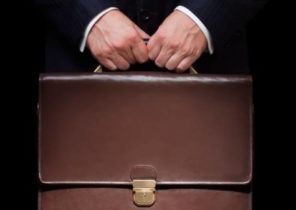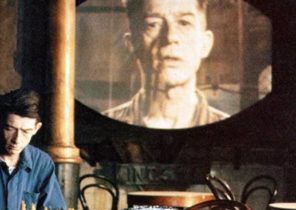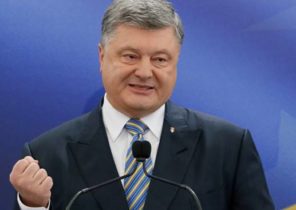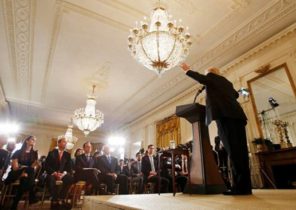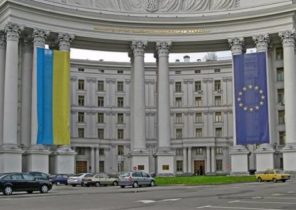
Does the Russian art censorship? Ask any singer, Director or an actor, their answers will certainly be verbose and contradictory. Although many hear the phrase “authoritarian regime” and imagine a caricature of barbed wire, pour barking police dogs and praising dear leader for the arts, under the stage make-up which literally emerges horror — the government of Vladimir Putin is more controversial than this picture allows you to see.
The paradox of the Russian state becomes particularly obvious if we analyze the thriving arts scene in this country. These contradictions control system and their peculiar impact on the world of Russian art contribute to the strengthening of Putin’s power, and, in fact, help to support the Russian President.
So is there censorship? Yes, they will approve some people, but it is not clearly expressed, and no one knows how it works. Others hold the opposite view, defending the idea. Just look, they say, many cultural figures gave us the Soviet Union — not like today’s young, spoiled, spineless representatives of art!
If we consider the problem in more detail and all the intricacies, the censorship is there, but it’s mostly self-censorship of the artists that they used to not be able to access public funding or stage venues, concert halls, exhibition halls.
In the fall of 2016 in the world of Russian art scandal, which is a predictable scenario. Exhibition of works by American photographer Jock Sturges (Jock Sturges) caused outrage and led to excesses. A group of well organized “the patriots” who call themselves “Officers of Russia”, appeared in the gallery in which the show took place. As a result, one photo was doused with urine, and the exhibition itself — which did not violate Russian laws is quickly closed.
Fast forward a few months ahead — and these same “patriots” for their “dirty” tricks already smashing in Prime time Dmitry Kiselyov, widely known in the West as Russia’s chief propagandist.
Censorship in Russia is the game. The self-styled “censors” see this as an opportunity to curry favor with some officials (and even before Putin himself) and arrange scandals. In turn other, more powerful “servant” of the Kremlin, undeterred, pulls them out and blazing. So the world of Russian art is not so much the object of a series of violent, systematic repression caused by the main, dominant ideology, as the subject and the clashes of influential people and alliances.
This game is consistent with the objectives of Putin. It serves as a guarantee that Russian art will continue to flourish as a whole, ensuring the prestige of the government and its leader. But this game is inevitably created for the Russian artists and spectators an unpredictable, stressful environment where you need to think carefully before you “put out”. It equally applies to the Pro-Kremlin representatives of the Russian art, and to those who are associated with conscious protest art — not to mention the mass of creative people who occupy the vast intermediate “gray zone”.
In Soviet times, the authorities set a clear framework and warned artists that go beyond these limits is prohibited. People generally knew how to behave, and be able to make informed decisions about how far to go and how to “overreact.” Putin’s officials represent the limits of random change them as they please, and then tell you that these boundaries do not exist. And that you are all crazy and they themselves invented.
Putin is not Kim Jong-UN. He was not interested to manage with starving peasants and fawning before him people-machines; he has serious ambitions on the world stage, and he wants to with Russia was considered in all spheres of life, including art. So it will prevent the organized persecution of the art and to postpone it as long as it is possible taking into account other interests, including the military.
For Russian artists this means that they are likely to be different to use. When released the film Andrei Zvyagintsev’s “Leviathan” — a terrible picture-thinking about how the Russian officials are cashing in on their fellow citizens — Minister of culture of Russia has decided to demonstrate their loyalty to the authorities, accusing the Director that the its a terrible picture of life in the country tries to please the Western audience. When subsequently the film was nominated for the award “Oscar” and has not received this award, this same Minister of culture immediately changed tactics, calling the Director a “talented” wizard. However, he made it clear that this award, in any case, is not a measure of talent, and no matter what this wonderful movie is not appreciated.
Hypocrisy? Of course. But accusations of hypocrisy are of no special importance in the political system, created for reasons of opportunism, for maximum benefit, and the Minister of culture knows it better than the Russian President.
In addition, you should take into account the fact that Putin himself wants the artists they admired. The admiration of the worthiest members of society politically convenient, but this is not enough. Can you explain why Putin has elevated someone like Vladislav Surkov, who was long considered the Kremlin’s “gray cardinal”, assigning it to positions of influence. The reason is that Surkov is not only a shrewd strategist and manipulator, he has also built a connection between the Kremlin and the art world, protecting some and intimidating others, and spoke with the creative intelligentsia not boring government jargon, and in their own language.
By the time when, in 2014, Russia decided to Annex Crimea, hundreds of prominent Russian artists, signed an open letter “in support of the President’s position on Ukraine and Crimea,” did it not out of fear for his life. Similarly, I don’t think most of them did it because they were so interested, what is happening in Ukraine. They played in this process, the role that had to play deliberately making something from them wanted by the Kremlin.
For the policy of opportunism characterized by the fact that it works in both directions. If all the authorities do, it’s just a charade designed to please the public, and the political leanings and beliefs of individuals can also be performative — role of government in production and can be raised or removed from the scene at any moment. Who better to understand that than someone who studies art?
